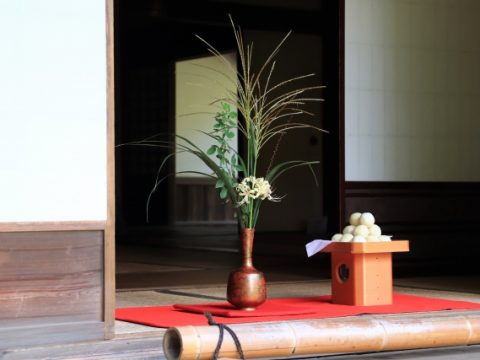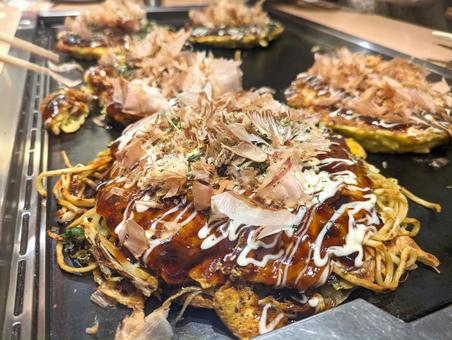Somen (そうめん)
JAPANESE FOODS
27.07.2022

When I think of the summer in Japan, I immediately think of the thick hot air, the song of loud cicadas, and the narration of the high school national baseball championship with some music played by brass bands to cheer each team up. We are all hot and sticky. All we want to eat is something cold and refreshing. That’s when my mom makes Somen for lunch or dinner.
What is Somen?
Somen is a Japanese noodle that is made of wheat flour. It is white, very thin, and sold in a dried form like spaghetti. Because of how light it is, the cooking time is only about a minute and a half to two minutes.

How to eat Somen?
You can enjoy Somen hot or cold. The most popular way of eating Somen in the summer is to dip it in a cold sauce called Mentsuyu (めんつゆ). Mentsuyu is a mixture of dashi, soy sauce, and mirin. You can make your own at home or purchase a bottle of pre-made Mentsuyu from a store. Many people enjoy mixing Yakumi, Japanese condiments, in Mentsuyu to add some flavors. The most common Yakumi is green onions, ginger, and Myoga (Japanese ginger).

How to cook Somen?
Somen can be boiled just like pasta. Make sure to use a big pot with a lot of water. It will help prevent the Somen from being sticky after cooking. Once you place the Somen in a pot, the water will bubble and rise, so be careful not to let it overflow. If you are using a gas top, adjust the heat to low. If it is an electric stove, it is hard to control the heat, so you can add a bit of cold water to reduce the water temperature.
When Somen is done cooking, you can drain water using a colander. Then place it under the cold running water to rinse. Make sure to use your hand to separate noodles, so every single noodle gets rinsed. Once it is not hot, put the colander into a bowl of ice water to give the Somen a freezing bath.

Somen for entertaining
There is a style called Nagashi Somen. It is a unique and fun way of eating Somen. Traditionally, a person who invented this style used an elevated bamboo tube to run cold water, then let Somen flow in the water for others to catch the noodles to eat. Since Somen is very thin and slippery, it can be hard to capture with chopsticks. If you happen to be in Japan, some restaurants offer Nagashi Somen to experience this fun activity.

I hope you will enjoy this cold refreshing food during the hot summer!

Eri Palmer
Eri grew up in Japan. She came to U.S. as an international student, and decided to stay in the country. Cooking is one of her passions, and she loves to cook Japanese food for her children.
Read previous articles by the writer
Read latest articles
KEYWORDS
- # PICKPICK
- # Resume
- # alcohol
- # Rice
- # Soup
- # winter food
- # Fast Food
- # seafood
- # spicy foods
- # raw food
- # fermented food
- # Transportation
- # MEAT
- # Edo culture
- # suits
- # clothing
- # drink
- # fish
- # seasoning
- # Japanese New Years Foods
- # Toshikoshi soba
- # Osechi Ryori
- # Ozoni
- # Christmas
- # Japanese fusion pasta
- # Wafu Pasta
- # Japanese Hot Pot
- # なべ
- # 鍋
- # Miyazaki
- # Chicken Nanban
- # Karamen
- # Autumn Wagashi
- # Mushi-yokan
- # Imo-yokan
- # Japanese Autumn Fruits
- # Autumn
- # Vending Machine
- # fall
- # dango
- # Chestnut rice
- # saury
- # Mushroom
- # Rice vinegar
- # Japanese condiments
- # 調味料
- # Sake
- # Mirin
- # Soy sauce
- # Japanese Noodles
- # Udon
- # Ramen
- # Yakisoba
- # Soba
- # Japanese Seaweed
- # 海藻
- # かいそう
- # Payslip
- # Training
- # Japanese summer foods
- # 和菓子
- # Wagashi
- # ryokucha
- # 夏
- # 飲み物
- # Ramune
- # ラムネ
- # Pokari Sweat
- # ポカリスエット
- # Calpis
- # カルピス
- # Mugicha
- # ume
- # 梅
- # うめ
- # umeshu
- # job hunting
- # tofu
- # Recruitment in Japan
- # miso
- # Japanese cuisine
- # Yellowtail and bonito
- # Children’s Day
- # Kashiwa Mochi
- # Chimaki
- # fruits
- # Kusamochi
- # Types of Agriculture in Japan
- # bread
- # パン
- # パン屋さん
- # japanese bread
- # shokupan
- # meal blead
- # anko bread
- # 桜
- # さくら
- # cherry blossom
- # visa
- # hanami
- # omotenashi
- # sakura
- # おもてなし
- # Japanese hospitality
- # oshibori
- # wet hand towel
- # hand towel
- # restaurant
- # Commuting in Japan
- # Women-only cars
- # Exit gate
- # japanese train
- # train
- # valentine
- # Japanese sweets
- # 朝食
- # Japanese Breakfast
- # Breakfast
- # Japanese
- # 日本
- # healthy
- # persimmons
- # hoshigaki
- # HR
- # work in Japan
- # jinji ido
- # corporate systems
- # Japanese work culture
- # bento
- # ekiben
- # shinkansen
- # omiyage
- # train station
- # Japanese culture
- # work culture
- # mentaiko
- # umeboshi
- # Japanese snacks
- # potato chips
- # Japanese potato chips
- # Japanese writing
- # seaweed
- # konbu
- # ocean foods
- # shio konbu
- # dashi
- # miso soup
- # food processing
- # pear
- # nashi
- # sweet potato
- # japanese sweet potato
- # stingray
- # satsuma imo
- # food value chain
- # homecooking
- # agriculture
- # Japanese homecooking
- # farming
- # nikujaga
- # shojin ryori
- # meat and potatoes
- # traditional foods
- # comfort food
- # buddhist food
- # manufacturing
- # factory
- # eihire
- # vegetarian
- # food and beverage
- # izakaya
- # yatai
- # japanese festival
- # taiyaki
- # matsuri
- # summer
- # Ikayaki
- # smart agriculture
- # shaved ice
- # kakigori
- # かき氷
- # summer dessert
- # Japan
- # Japanese foods
- # dessert
- # fruit
- # matcha
- # icecream
- # Pikcup
- # Pikc up
- # Pcikup
- # skilled labor visa
- # working visa japan
- # Dineer Table in Japan
- # Japanese manner
- # Japanese food
- # Japanese Table Manner
- # Chopsticks
- # Japanese traffic signs
- # traffic information
- # road rules in Japan
- # chocolate
- # green tea
- # Osaka
- # Work Japan
- # Japanese company
- # ikura
- # sushi
- # nigiri
- # wasabi
- # PCIK
- # PICK UP
- # PICK
- # PICKUP








